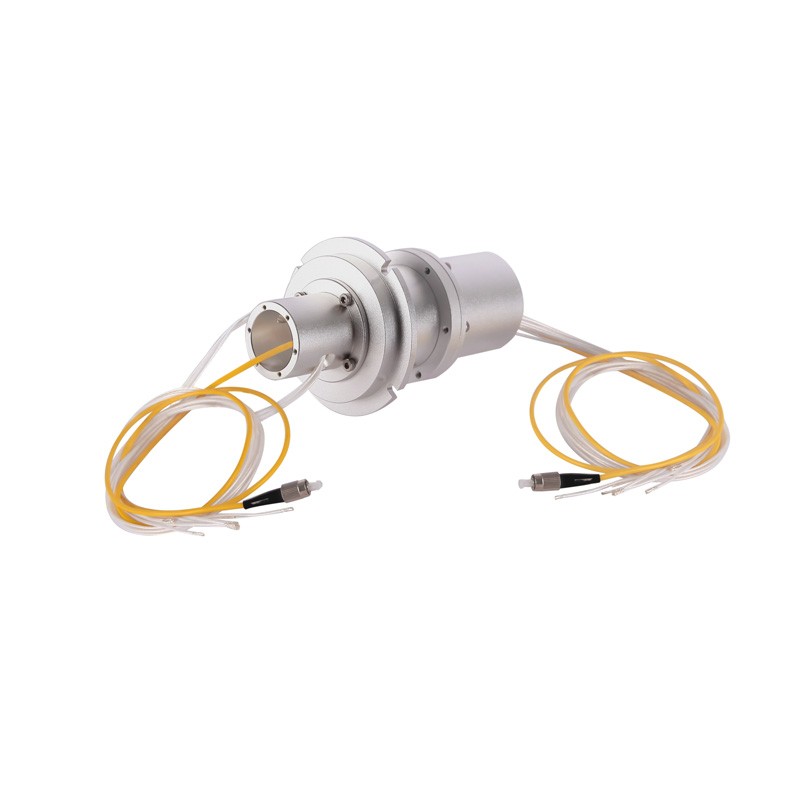As we increasingly strive for automation and efficiency in a digitally controlled world, the significance of electrical rotary systems has never been greater. They act as the mechanical muscle behind various forms of technology, optimizing their operations and expanding their capabilities. In factories, they drive assembly lines, keeping production continuous and reliable. They mobilize electric vehicles, demonstrating the potential of sustainable transportation. In almost every corner of home automation, electrical rotary systems are integral, from powering your air conditioning unit to your food processor. Their pervasiveness is a testament to their importance in our world, making our daily lives more seamless and productive.
Introduction to Electrical Rotary: Understanding the Basics
Electrical rotary systems, the heart of numerous machines and devices, are intricate electromechanical assemblies that convert electrical energy into rotary motion. This process is the driving force behind many of today’s appliances, equipment, and machines, enabling them to operate and perform their respective tasks. From the hard drive in your computer to the electric car’s motor, and to the massive turbines generating electricity, the principle at work is the marvel of electrical rotary systems.
As we delve into the realms of this cornerstone technology, this article will provide, in layman’s terms, a deep dive into the world of electrical rotary systems. We’ll explore their workings, the many forms they come in, and their indispensable functions across industries. As we touch upon the advancements and the challenges they face, we’ll present a rounded view of their sustainable features and future implications. Moreover, this article will guide those looking to invest in these systems, offering insights into key considerations when choosing and maintaining an electrical rotary system.
Through this journey, we confront the importance of understanding these powerful systems, which serve as silent revolutionaries in our technology-powered lives. This understanding, in turn, enables us to appreciate not only the sophistication of the devices around us but also the tremendous technological evolution humanity continues to drive. In the subsequent chapters, prepare to be enlightened, informed, and intrigued by the dynamic realm of electrical rotary systems.
Historical Evolution of Electrical Rotary Systems
The journey of electrical rotary systems is a fascinating saga of human innovation and technological advancement. It traces back to the early 19th century when Michael Faraday and Joseph Henry independently discovered the principles of electromagnetic induction, laying the groundwork for the future development of electrical motors. However, it wasn’t until the latter part of the century that the first practical electrical rotary systems emerged, thanks to the pioneering efforts of inventors like Nikola Tesla and Thomas Edison.
The introduction of Tesla’s alternating current (AC) motor in 1888 marked a significant breakthrough in the evolution of electrical rotary systems. It resolved many issues associated with the direct current (DC) motors of the time, offering a more efficient, reliable, and easier-to-maintain solution. Tesla’s AC motor set the stage for the widespread electrification of industry and transportation, revolutionizing how mechanical work is powered.
Following this, the 20th century witnessed a series of innovations that refined and optimized the design and functionality of electrical rotary systems. The development of the squirrel cage rotor, variable frequency drives, and advancements in magnetic materials significantly improved the performance, efficiency, and application range of these systems. Each breakthrough addressed specific challenges, such as speed control, energy conservation, and operational versatility, further cementing the role of electrical rotary systems in modern technology.
The latter part of the century saw the digital revolution, which introduced computer-controlled systems into the mix, enhancing the precision and capabilities of electrical rotary devices. This innovation allowed for the sophisticated control systems we see today in robotics, automated manufacturing, and even in the precise positioning required in medical devices.
A pivotal moment in the ongoing evolution of electrical rotary systems is the focus on sustainability and energy efficiency. Innovations such as the brushless DC motor exemplify the industry’s shift towards developing systems that consume less energy, offer longer life spans, and require minimal maintenance. These advancements not only optimize operational efficiency but also contribute significantly to environmental sustainability, aligning with global efforts to reduce energy consumption and carbon footprints.
The historical journey of electrical rotary systems illustrates a continual quest for improvement and innovation. From the basic principles of electromagnetic induction to the complex, computer-controlled systems of today, each step forward has expanded the boundaries of what is possible, transforming every facet of modern life. As we look to the future, it’s evident that the evolution of electrical rotary systems continues to be driven by a balance of technological prowess and environmental consciousness, promising a new era of advancements that are as sustainable as they are revolutionary.
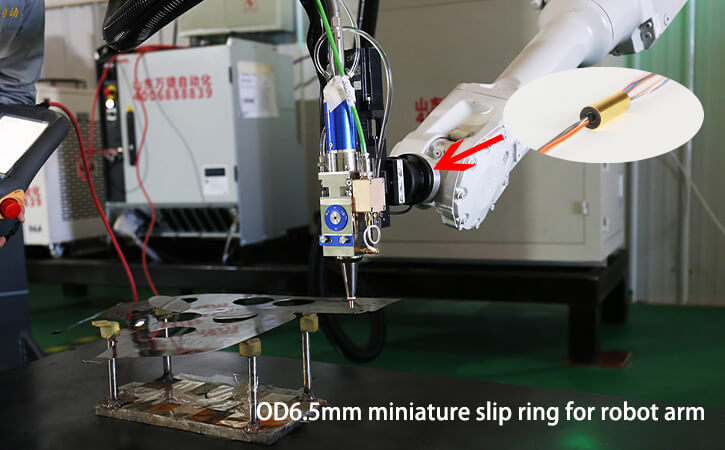
How Electrical Rotary Systems Work: A Technical Insight
The Ingenious Principle of Electromagnetic Induction
At their core, electrical rotary systems exploit the principle of electromagnetic induction. This phenomenon occurs when a conductor moving through a magnetic field induces an electrical current. It is this current, flowing through the windings of the motor, that interacts with a magnetic field to produce force in the form of torque applied to the motor’s shaft. In simpler terms, electrical energy is transformed into mechanical energy, creating rotation.
Real-World Magic in Induction Motors:
Consider the everyday electric fan. An induction motor within spins the blades, providing relief on a hot day. At the flick of a switch, electric current courses through coils on the rotor, interacting with the static magnetic field of the stator. This interaction generates motion, turning electrical currents into a cooling breeze.
Diverse Types and Their Mechanisms
The world of electrical rotary systems isn’t one-size-fits-all. Various types have been designed to suit a plethora of applications, each with a unique mechanism pivotal to its function.
AC Induction Motors:
AC induction motors, the workhorses of industry, operate on alternating current. They feature a simple yet robust design without brushes, commutators, or slip rings – parts that could wear down or require maintenance. Their efficiency and durability have made them a staple in heavy Machinery and appliances.
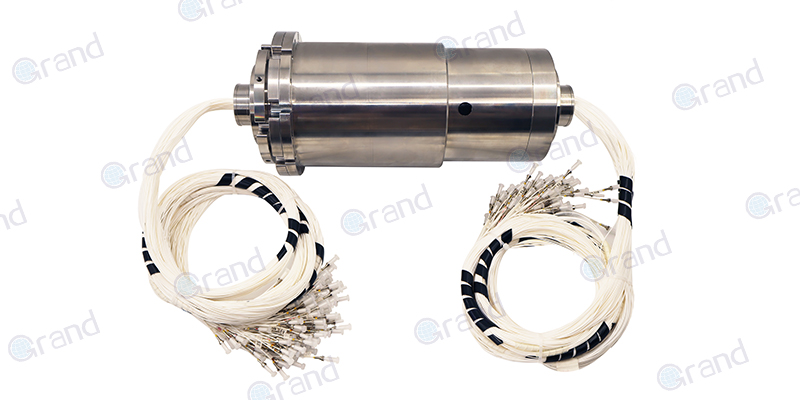
DC Motors:
DC motors, on the other hand, use direct current and offer precise control over speed, making them ideal for applications where speed regulation is crucial. They come in various forms:
- Brushed DC motors, use brushes and a commutator to supply current to the rotor.
- Brushless DC motors, which are more efficient, and reliable, and provide a longer operating life thanks to electronic commutation instead of brushes.
Servo Motors:
Servo motors, precision devices that provide accurate control of angular position, velocity, and acceleration, are essential in robotics, CNC machinery, and automated manufacturing. They often include a feedback mechanism to adjust for discrepancies between the intended and actual motor position.
Stepper Motors:
Stepper motors move in discrete steps, providing precise control for applications like 3D printers and digital watches. They require no feedback for position, which simplifies their design, though they typically require a controller to operate.
Synchronous Motors:
Lastly, synchronous motors run at a constant speed up to their synchronous rate regardless of the load, which makes them favorable in scenarios that demand precise timing, such as in synchronous clocks or timing devices.
Dispel the Myths and Get Practical
Some may assume that more power always equates to better performance in electrical rotary systems. However, this is a misconception. For instance, an oversized motor can result in energy inefficiency and higher operational costs. Selection should be based on the specific requirements of the application — a principle that rings true across most technology choices.
Insights for Longevity and Efficiency
As consumers or engineers looking to deploy these systems, an understanding of basic maintenance, such as ensuring proper lubrication and periodic inspection, goes a long way. With actionable knowledge of how these systems work, users are better equipped to make informed decisions, maintain equipment effectively, and recognize when expert intervention is needed.
The complexity of electrical rotary systems is vast, yet their fundamental principles and diverse types offer a solution for nearly every conceivable application where rotary motion is needed. Understanding these systems opens up a world of technological wonders, with each type of motor providing tailored advantages that can drive innovation forward.
Key Applications of Electrical Rotary Systems
Electrical rotary systems, with their varied forms and functionalities, have become an integral part of many industries. By converting electrical energy into mechanical movement, they perform a myriad of critical functions across different sectors. From powering the smallest gadgets to driving the largest machines, these systems are at the heart of modern technology and industry. To truly appreciate their pervasiveness and versatility, let’s explore their applications across various domains.
Manufacturing and Automation
The Backbone of Production Lines
In the realm of manufacturing, induction motors are the silent workhorses driving conveyor belts and assembly lines. As an example, consider the automotive industry, where precision and reliability are paramount. Here, servo motors are employed extensively for tasks requiring precise motion control, such as in robotic arms used for assembling vehicle components. The accuracy and speed of servo motors ensure that production lines operate smoothly and efficiently, meeting the high standards of quality and productivity demanded by the industry.
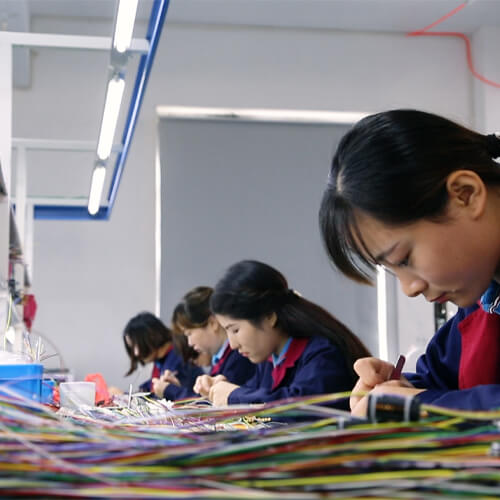
Renewable Energy
Powering Sustainable Solutions
Renewable energy systems rely heavily on electrical rotary systems to harness natural resources. Wind turbines, for instance, utilize synchronous motors to convert wind energy into electrical energy. The operation of a wind turbine illustrates the symbiotic relationship between nature and technology, where the rotational movement caused by wind blades is converted into electricity, showcasing the critical role of electrical rotary systems in promoting sustainable energy solutions.
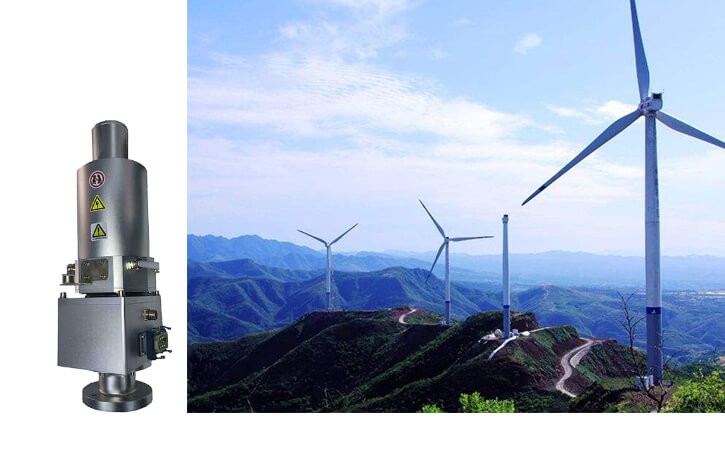
Healthcare
Enhancing Medical Equipment
In the healthcare industry, the precision and reliability of electrical rotary systems can be life-saving. Consider the use of brushless DC motors in MRI machines. Their operational efficiency and low maintenance requirements ensure that these crucial pieces of medical equipment are available around the clock, providing critical diagnostic capabilities with reliability. The application of electrical rotary systems in healthcare extends to numerous devices, from ventilators to electric surgical tools, highlighting their significance in modern medicine.
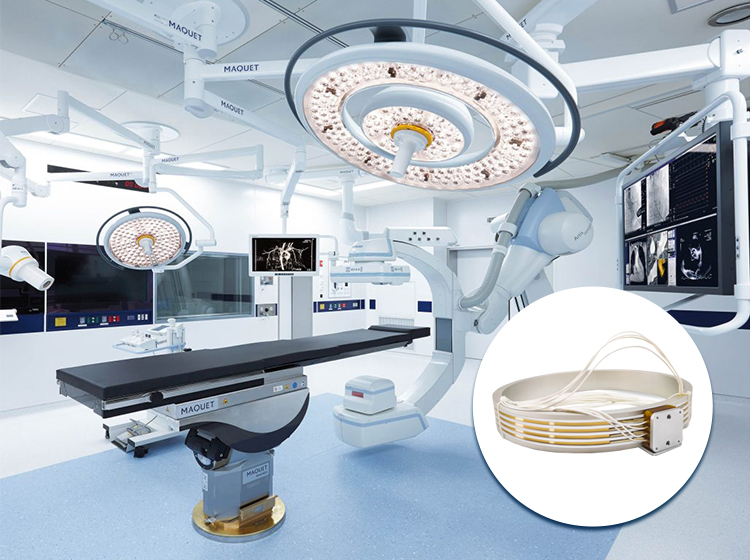
Transportation
Driving the Future of Mobility
Electric vehicles (EVs) represent a transformative use of electrical rotary systems in transport technology. The traction motors in EVs, which are typically AC induction motors or permanent magnet motors, offer a cleaner alternative to traditional combustion engines. They not only reduce carbon emissions but also provide high efficiency and performance, exemplifying how electrical rotary systems are paving the way for sustainable mobility.
Home Appliances
Simplifying Daily Life
In the domestic sphere, electrical rotary systems simplify and enhance our daily routines. From the refrigerator keeping our food fresh to the washing machine cleaning our clothes, various forms of motors power these essential appliances. The brushless DC motor, for instance, is favored in many modern appliances for its efficiency and durability, ensuring that our household appliances run quietly, efficiently, and reliably.
Dispelling Common Misconceptions
A frequent misconception is that all electrical rotary systems are loud, energy-intensive, and prone to frequent maintenance. This, however, is not the case. Advances in technology have led to the development of motors that are not only quiet and energy-efficient but also require minimal upkeep. Understanding the specific application and selecting the appropriate type of motor can significantly mitigate these concerns.
The pervasive use of electrical rotary systems across industries underlines their critical role in the functioning of modern society. By examining specific examples, from the precision required in medical devices to the robustness needed in industrial machinery and the innovation driving sustainable transportation, we gain a deeper appreciation for these systems. Their versatility and importance cannot be overstated, as they continue to revolutionize industries, improve our quality of life, and lead the way toward a sustainable future.
Advantages of Using Electrical Rotary Systems
Electrical rotary systems afford a remarkable range of benefits, amongst which energy efficiency and durability stand out. They continue to power innovation and transformation in technology due to their inherent advantages. By delving into these features and real-world instances, the superiority of electrical rotary systems becomes palpable.
Energy Efficiency: A Cost and Environment Savior
Cutting Down Operational Expenses
Most electrical rotary systems, particularly AC induction motors, and brushless DC motors, exhibit high energy efficiency. This characteristic equates to lesser energy consumption for the same amount of work compared to less efficient systems. In industries and businesses where these motors operate around the clock, this increased efficiency can lead to a substantial reduction in energy costs. For instance, in an industrial setting, replacing less efficient motors with high-efficiency versions could result in saving thousands of dollars annually on energy bills.
Championing Sustainability
Improved energy efficiency transcends mere cost-saving; it also contributes significantly to environmental preservation. Lesser energy consumption means reduced demand on power plants and subsequently lower greenhouse gas emissions. As organizations worldwide strive to achieve sustainability goals, the efficient use of electrical rotary systems underscores a concrete step towards achieving these objectives.
Durability and Reliability: Unyielding Despite Conditions
Hardiness in Harsh Environments
The robustness of electrical rotary systems, especially AC induction motors, is one of their most distinguishing features. These motors are resilient to various environmental conditions, including high temperatures, dirt, and moisture. They can operate in heavy-duty industrial applications like mining or oil and gas where the working conditions can be harsh and hostile. These motors’ resistance to dust, water, and other environmental challenges ensures uninterrupted operation – a crucial aspect of maintaining productivity in these sectors.
Consistent, Reliable Performance
Reliability is another significant advantage offered by electrical rotary systems. For example, brushless DC motors have no brushes to wear out, resulting in a considerably longer lifespan, minimal maintenance requirements, and consistent performance over time. When used in critical applications – such as a heart pump in a healthcare setting – these features of dependability can indeed be life-saving.
Debunking Misconceptions
A common misconception is that high-efficiency motors are always expensive. However, the initial cost is often offset by the significant operational savings that can be achieved over the motor’s lifetime. Instead of focusing only on the upfront costs, the long-term energy and maintenance cost savings should be considered when evaluating the benefits of these motors.
Takeaways for Optimized Usage
Understanding the advantages of electrical rotary systems – such as energy efficiency and durability – enables users and engineers to make informed selections that fit their requirements best, optimize energy usage, reduce operational costs, and promote sustainability. As technology continues to advance, these systems will invariably become increasingly proficient, offering greater benefits in a myriad of applications across various industries. This reality underscores the essentiality of understanding and leveraging the advantages these systems confer, ensuring businesses and individuals reap the fruits of these technological marvels.
Concerns and Challenges with Electrical Rotary Systems
While electrical rotary systems offer a plethora of benefits across various applications, they are not without their challenges. Key concerns such as maintenance issues, wear and tear, and energy consumption can impact their efficiency, lifespan, and operational cost. Understanding these challenges and exploring potential solutions is crucial for optimizing the performance and durability of these systems.
Tackling Maintenance and Wear & Tear
Navigating Through Maintenance Hurdles
Regular maintenance is a critical aspect of ensuring the long-term functionality and efficiency of electrical rotary systems. For instance, in brushed DC motors, the brushes and commutator experience wear over time, requiring periodic replacement. This wear and tear can lead to increased maintenance needs and downtime, affecting overall productivity and operational costs.
Case Study: Industrial Conveyance
In an industrial setting, where conveyance systems run almost continuously, any failure due to wear and tear can cause significant disruptions. Companies have begun implementing predictive maintenance schedules, leveraging sensors, and IoT (Internet of Things) technology. These technologies predict wear and tear, alerting maintenance teams ahead of time to prevent unexpected downtime. By addressing wear and tear proactively, businesses can greatly reduce maintenance issues and extend the life of their electrical rotary systems.
Energy Consumption Challenges
Energy efficiency is a paramount concern, particularly in large-scale industrial applications. Traditional motors can consume vast amounts of electricity, particularly if they operate continuously or under heavy loads.
Innovation: High-efficiency Motors
The shift toward high-efficiency motor designs, such as IE3 and IE4 class motors, presents a viable solution to this challenge. These motors are designed to use energy more effectively, reducing wastage and operational costs. Moreover, the adoption of variable frequency drives (VFDs) allows for precise control of motor speed and torque, leading to further energy savings by adjusting the motor’s operation based on the actual demand.
Mitigating Challenges: A Path Forward
Embracing Technological Advancements
The ongoing advancement in materials science and engineering plays a pivotal role in overcoming the challenges associated with electrical rotary systems. For example, the development of brushless motor technology mitigates the wear and tear issues associated with brushes, offering a more reliable and low-maintenance solution.
Integration of Smart Technologies
The integration of smart technologies and IoT into electrical rotary systems offers significant opportunities for improving their operation and efficiency. Smart sensors can monitor various parameters, such as temperature, vibration, and wear, providing real-time data for predictive maintenance and energy management. This proactive approach can help preemptively address issues before they escalate, reducing downtime and extending the system’s lifespan.
Fostering Sustainable Practices
Promoting the adoption of energy-efficient motors and practices is crucial for mitigating energy consumption challenges. Incentives for upgrading to more efficient systems, coupled with stricter energy regulations, can encourage industries to invest in more sustainable solutions.
A Proactive Approach to Challenges
While concerns such as maintenance, wear and tear, and energy consumption present significant challenges for electrical rotary systems, the path to overcoming these hurdles is clear. Through technological innovation, proactive maintenance, and a commitment to energy efficiency, the potential of these systems can be fully realized. As we continue to progress in technology and sustainability practices, the future of electrical rotary systems looks promising, promising enhanced performance, reliability, and environmental responsibility.
Environmental Impact and Sustainability of Electrical Rotary Systems
In the realm of industrial machinery and consumer electronics, electrical rotary systems, notably induction motors, play a pivotal role. Their widespread deployment across various sectors makes their environmental impact and sustainability issues of paramount importance. These systems’ journey towards sustainability is characterized by both challenges and advancements.
Assessing the Environmental Friendliness of Electrical Rotary Systems
Electrical rotary systems, by their very nature, harness electrical energy to perform mechanical work. Their environmental footprint is thus tied to the sources of this electrical energy. In regions where the energy mix is dominated by fossil fuels, the indirect emissions associated with these systems can be significant. However, when powered by renewable energy sources, their environmental footprint diminishes markedly.
Renewable Energy Integration
The increasing integration of renewable energy sources into the grid is rendering electrical rotary systems more environmentally friendly. A case in point is the use of solar or wind power to drive water pumps in irrigation, drastically reducing the carbon footprint associated with agricultural pumping operations.
Material Use and Efficiency
The environmental impact of electrical rotary systems also extends to their manufacturing processes and material use. The use of rare earth elements in high-efficiency motors, while beneficial for performance, raises concerns regarding sustainable sourcing and recycling.
Towards Sustainable Electrical Rotary Systems
The journey towards making electrical rotary systems more sustainable is multi-faceted, involving advances in materials science, efficiency improvements, and integration with smart technologies.
High-efficiency Motors
The shift towards high-efficiency motor designs, such as those complying with IE3 and IE4 standards, significantly reduces energy consumption. These motors leverage advancements in magnetic materials and manufacturing techniques to minimize losses and improve performance. For instance, the adoption of these motors in HVAC systems has been shown to reduce energy consumption by up to 30%, exemplifying their potential in reducing the environmental footprint of buildings.
Smart and Predictive Maintenance
Smart technologies play a crucial role in enhancing the sustainability of electrical rotary systems. By incorporating sensors and employing predictive analytics, these systems can operate at optimal efficiency levels, further reducing energy consumption. Predictive maintenance can preempt mechanical issues that could lead to inefficient operation or even system failures, ensuring that the systems run as intended with minimal waste.
Practical Application: Industrial Fans
In an industrial setting, fans powered by smart, high-efficiency motors can adapt their speed to the required conditions, significantly reducing energy use. Predictive maintenance ensures these fans operate efficiently, further decreasing the environmental impact.
Renewable Energy and Microgrids
The integration of electrical rotary systems with renewable energy sources and microgrids presents a promising avenue for sustainability. By drawing power from localized renewable sources, these systems can operate with a much lower carbon footprint. Microgrids also offer resilience and the ability to operate independently of the broader grid, ensuring that renewable energy can be reliably used even in remote or off-grid locations.
Embracing Sustainability
Electrical rotary systems are on a transformative journey towards sustainability. Through a combination of technological advancements, such as high-efficiency motors and smart maintenance systems, and the increased integration of renewable energy, these systems are becoming increasingly environmentally friendly. The ongoing innovation in materials and manufacturing processes further promises to mitigate the environmental impact of these essential tools. As we continue to strive for a more sustainable future, the role of electrical rotary systems in achieving this goal is both significant and evolving.
Innovations and Future Trends in Electrical Rotary Technology
As the world marches into a future where technological advancements redefine our daily lives, electrical rotary systems have not been left behind. These systems are undergoing a renaissance, with innovations aimed at increasing their efficiency, reducing their environmental impact, and expanding their capabilities. Let’s unravel these recent advancements and touch upon the imminent trends poised to shape the future of electrical rotary technology.
Technological Advancements in Electrical Rotary Systems
From revamping age-old designs to incorporating futuristic materials, recent advancements in electrical rotary systems are as diverse as they are impactful.
Brushless Direct Current (BLDC) Motors
BLDC motors represent a major leap forward in rotary technology. Doing away with brushes, these motors offer superior efficiency, reduced maintenance, and longer operational life. Their electronic control also allows for precise speed and torque management, making them highly desirable for applications ranging from electric vehicles to HVAC systems.
Citing Real-World Adoption
A quintessential example is their use in drones. The precision and efficiency of BLDC motors allow for better flight control and longer battery life, which are crucial for both consumer-level and specialized commercial drones used in surveying and inspections.
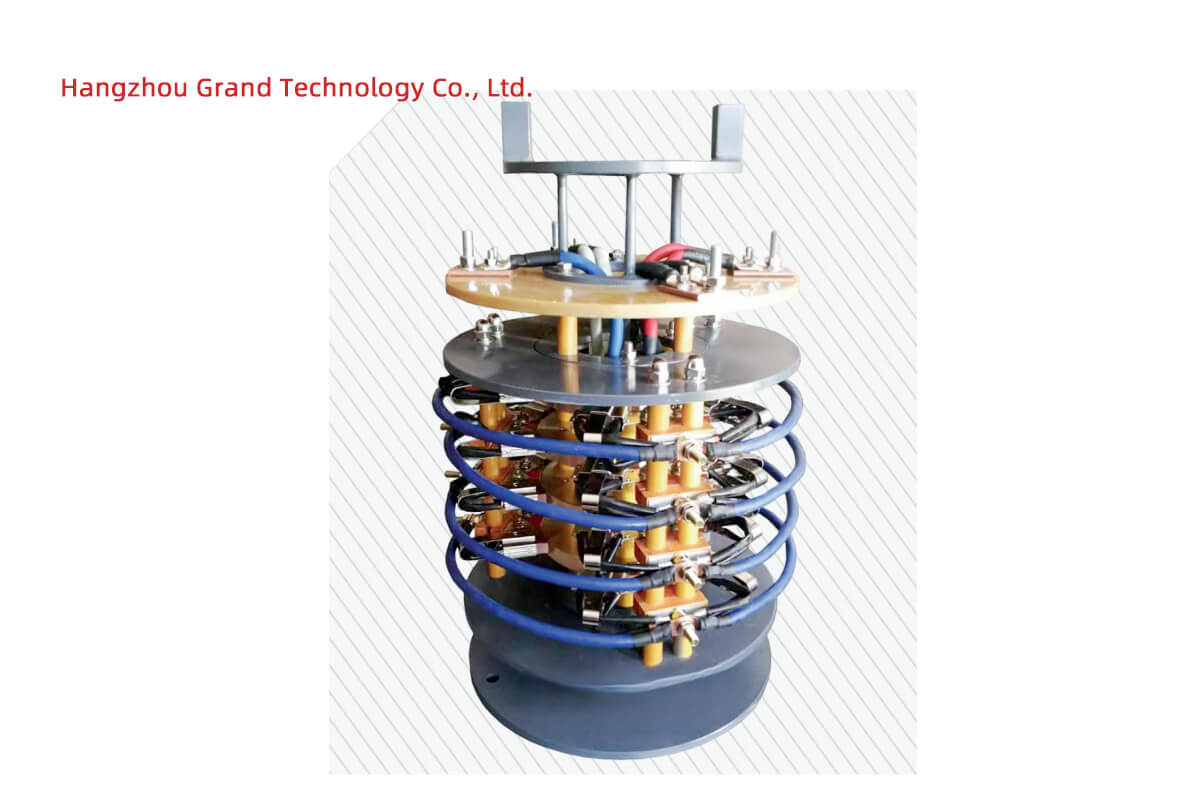
Nanotechnology in Motor Components
The introduction of nanomaterials into motor components, like windings and bearings, has the potential to significantly reduce energy losses through improved electrical and thermal conductivity. These materials can also make motors lighter and more durable, further enhancing their performance.
Case Study: High-performance Sports Cars
The application of nanotechnology-infused components in the motors of high-performance sports cars showcases both the immediate performance benefits and the longer-term reliability enhancements, with these vehicles achieving faster acceleration and higher efficiency.
Advanced Cooling Systems
Effective cooling is another avenue where innovation thrives. Advanced cooling designs such as liquid cooling and the use of phase-change materials are becoming more prevalent. These technologies address the heat management challenge in high-performance motors, maintaining efficiency and preventing thermal degradation of components.
Gazing into the Rotary Systems of Tomorrow
The future beckons with the promise of even more radical changes and exciting possibilities for electrical rotary systems. Let’s speculate on some emerging trends.
Internet of Things (IoT) Integration
IoT integration promises a level of interconnectivity and smart management previously unattainable. Future rotary systems could seamlessly communicate with other devices, leading to improved operational efficiency and enabling intelligent energy networks.
Possible Scenario: Smart Appliances
Envision a household where all appliances, powered by IoT-enabled induction motors, operate in harmony to optimize energy usage based on real-time pricing and demand, leading to a more efficient and cost-effective home.
Artificial Intelligence (AI) and Machine Learning (ML)
AI and ML stand to redefine how rotary systems operate and are serviced, with algorithms optimizing performance in real time and predicting maintenance needs before issues arise.
Imagined Implementation: Automated Factories
In a fully automated factory setting, AI-driven rotary systems could dynamically adjust their operations based on workflow, energy availability, and predictive maintenance cues, leading to unprecedented efficiency levels.
Advanced Composite Materials
The development of new composite materials will likely enable the production of lighter, stronger, and more efficient motors. These materials could yield significant energy savings and performance gains.
Future Prospect: Aerospace Applications
Lightweight, yet powerful rotary systems in aerospace applications could revolutionize the efficiency of aircraft, potentially allowing for longer flights with reduced energy consumption.
An Electrifying Future Ahead
With continuous innovations and a strong push towards amalgamating intelligence with efficiency, the future trends in electrical rotary technology seem poised for an exciting trajectory. From the silent workhorse in household appliances to the power muscle in industrial machines, electrical rotary systems are set to become smarter, more efficient, and more integrated into our connected world. By keeping abreast of these changes, engineers, businesses, and consumers can prepare for a future where the possibilities of electrical rotary technology are bound only by the limits of our imagination.
Choosing the Right Electrical Rotary System: A Buyer’s Guide
Selecting the appropriate electrical rotary system – whether for industrial equipment, commercial appliances, or personal projects – is a critical decision that can significantly impact both functionality and cost efficiency. This guide synthesizes key factors and maintenance tips to assist buyers in making informed decisions that align with their specific needs.
Factors to Consider for Selection
Understanding Application Requirements
First and foremost, assess the core requirements of the application. Different rotary systems offer varying torque, speed, and power capacities. For instance, if you’re choosing a motor for a conveyor belt in a manufacturing setting, torque and continuous operation may take precedence.
Efficiency and Power Consumption
Efficiency ratings can directly influence power consumption and operational costs. High-efficiency motors – although sometimes more costly upfront – can substantially lower electricity bills over time, a factor that’s critical for energy-intensive industries.
Real-World Impact: HVAC Systems
Take the example of HVAC systems in large buildings where motors run continuously. Selecting a high-efficiency motor could mean substantial savings over the system’s lifetime.
Size and Integration Capabilities
The physical size of the rotary system and its integration capabilities with existing machinery or infrastructure are practical concerns. A system that requires extensive retooling or construction for installation might lead to increased costs and time delays.
Environmental Compatibility
Consideration of the operational environment, such as temperature, moisture, or exposure to corrosive substances, is vital. In harsh environments, a system with robust environmental sealing and corrosion-resistant components is necessary to prevent premature failure.
Future-Proofing and Scalability
Anticipate future needs and scalability potential. In sectors poised for growth or technological shifts, foresight in selecting systems that can interface with emerging technologies or expand in capacity can be invaluable.
Maintaining and Optimizing Lifespan
Regular and strategic maintenance will ensure the longevity and optimal performance of an electrical rotary system. Here are some tips to maintain and extend the life of these systems:
Adhering to a Maintenance Schedule
Develop and adhere to a maintenance routine based on the manufacturer’s specifications. Regular inspections can catch wear and tear early, preventing costly breakdowns.
Case Study: Industrial Pumps
In industrial pump applications, a study by Plant Engineering shows that proactive maintenance can reduce the risk of motor failure by as much as 66%.
Lubrication and Cleaning
Periodic lubrication of moving parts keeps a system running smoothly, while routine cleaning can prevent the buildup of dust and debris, which can impede performance and cause overheating.
Monitoring Performance
Use condition monitoring tools to track system performance. For example, vibration analysis can detect imbalances or misalignments before they result in significant damage.
Updating Control Systems
Keep control systems updated. Modern digital controls can enhance efficiency by optimizing the performance of rotary systems, much like smart thermostats have improved HVAC operations.
Energy Audits
Conduct occasional energy audits to ensure that the rotary system is still meeting its expected performance markers. Inefficiencies often indicate underlying issues that need addressing.
Conclusion: The Integral Role of Electrical Rotary in Modern Technology
Throughout this guide, we have traversed the multifaceted landscape of electrical rotary systems, unveiling their complexities, operational efficiencies, and the pivotal role they play in contemporary technology. From understanding the nuanced factors critical to selecting an apt rotary system for various applications to key strategies for maintaining and optimizing these systems’ lifespans, the journey underscores the undeniable significance of electrical rotary systems in fueling advancements and sustaining the operational integrity of modern machinery and devices.
Summarizing the Core Insights
Tailored Selection for Optimal Functionality
The initial discussions stressed the importance of aligning the choice of electrical rotary systems with specific application needs — emphasizing efficiency, compatibility with existing systems, and environmental resilience. The example of high-efficiency motors in HVAC systems illuminated how such tailored selections directly translate to cost savings and performance enhancements.
Maintenance as a Pillar for Sustainability
Cementing the sustainability of rotary systems hinges on rigorous maintenance routines and performance monitoring. Case studies, like the one involving industrial pumps, demonstrated how proactive maintenance not only extends the lifespan of these systems but also curtails operational costs by preventing unforeseen failures.
Reflecting on the Future and Ongoing Relevance
The landscape of electrical rotary systems is perpetually evolving, spurred by incessant technological advancements and the clamor for greener, more efficient solutions. The future points towards further integration of IoT and AI capabilities, promising smarter, self-optimizing rotary systems that could revolutionize efficiency and reduce human intervention. Moreover, advancements in materials science are poised to produce components that are not only more durable but also significantly lighter and more energy-efficient.
Future Gazing: Electric Vehicles (EVs)
A compelling illustration of the future trajectory can be seen in the electric vehicle sector. Here, ongoing innovations in electrical rotary technology, such as improvements in motor efficiency and battery life extension, are crucial. These advances could enhance EV performance, making them more accessible and appealing to a broader market, thus accelerating the transition toward sustainable transportation.
Concluding Thoughts
In essence, the journey through the intricacies and developments surrounding electrical rotary systems unveils a technology deeply ingrained in the fabric of modern civilization. From powering the smallest household appliances to driving the massive machinery in the industry, these systems are the unsung heroes behind the scenes, enabling our daily routines and pioneering innovations.
As we navigate towards a future marked by rapid technological advances and growing environmental consciousness, the evolution of electrical rotary systems will undoubtedly play a pivotal role. By continuing to refine these systems through innovation, maintenance, and smart integration, we pave the way for a future where efficiency, longevity, and sustainability are not just ideals but everyday realities. The ongoing quest for improvement in electrical rotary systems is a testament to the human spirit’s relentless pursuit of excellence and sustainability, marking an exciting chapter in the annals of technological evolution.
FAQs about Electrical Rotary
Q: What is an Electrical Rotary System?
A: An electrical rotary system refers to an assembly of components that convert electrical energy into mechanical energy using electromagnetic principles. A typical example is an electric motor where electricity creates an electromagnetic field, which triggers movement in the motor’s rotor.
Q: Why are Electrical Rotary Systems Important?
A: Electrical rotary systems are integral to modern life. They power a vast array of machinery and devices. From home appliances, and electric vehicles, to industrial machines, these systems convert electrical energy into useful mechanical energy, enabling various processes to take place.
Practical Example: A typical example is the spinning drum in a washing machine, enabled by an electric motor, which utilizes the principles of electrical rotary systems.
Q: What is a BLDC Motor?
A: BLDC stands for Brushless Direct Current. It’s a type of motor that uses electronic commutation instead of the mechanical brushes seen in conventional motors. This design offers several advantages, including higher efficiency, longer lifespan, and reduced maintenance needs.
Q: What Impact Does Efficiency Have on Electrical Rotary Systems?
A: Efficiency in rotary systems affects how much of the input electrical energy is converted into useful mechanical work. Higher efficiency means lesser energy losses to heat and noise, leading to lower operating costs and less environmental impact.
Q: How Can the Lifespan of Electrical Rotary Systems Be Extended?
A: Regular maintenance is key. This includes following a servicing schedule, ensuring proper lubrication of moving parts, cleaning to remove dust and debris, and monitoring system performance to detect and solve problems early. Another important aspect is the use of modern control systems, which can optimize performance and reduce wear and tear.
See What We Can Do

